Where does hospital food come from?
For most of Winnipeg's major medical centres, the pastel-coloured meal trays are assembled in a large regional distribution facility surrounded by commercial warehouses and industrial manufacturers in suburban St. Boniface.
The Winnipeg Regional Health Authority's Nutrition and Food Services Facility opened in 1998. It was part of a national trend to move hospital kitchens from on-site to centralized management and was expected to save the provincial government about $5 million a year.
Currently, the facility prepares more than 8,000 meals daily for patients at 11 local hospitals and long-term care centers.

Mike Sudoma/Free Press
A typical meal served to a patient at one of the 11 area hospitals and long-term care centers served by WHRA.
Health officials recently invited members of the media to don hair nets, white smocks and disposable boots for a thorough tour of the facility and to sample what's on offer.
The open house was a chance for reporters to marvel at the technological innovations inside the 47,000-square-foot building, and for staff to try to dispel a long-standing stigma that hospital food is substandard.
It's a topic that's been simmering since the distribution center opened, and based on a recent Free Press critique of menus at Riverview and Deer Lodge medical centers, it appears to still be a hotly debated topic.
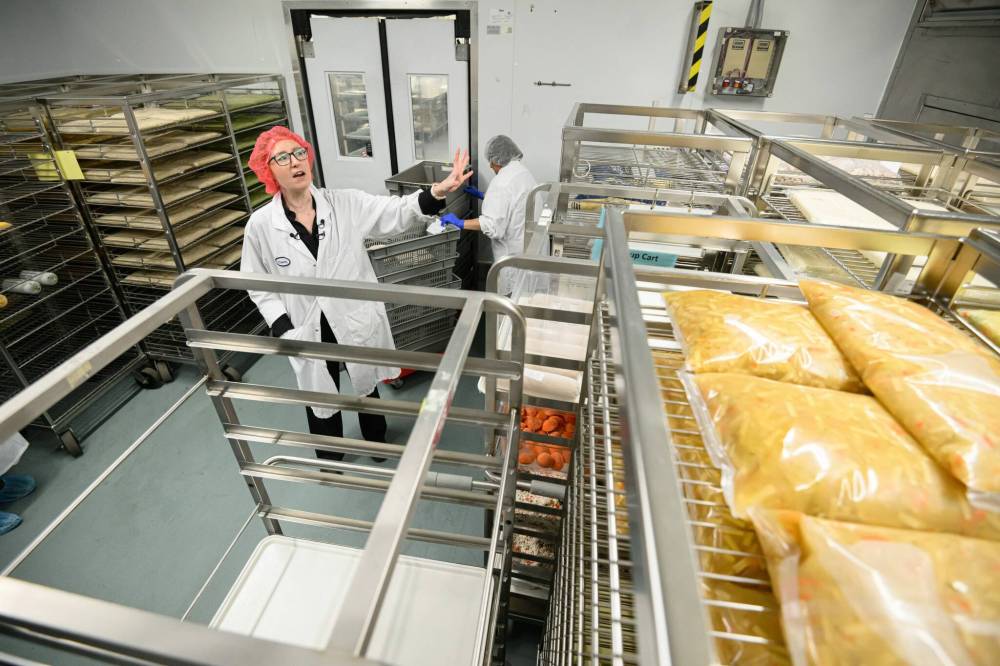
Photo: Mike Sudoma/Free Press
Operations manager Charity Hanslit explains how racks of produce are organised in the food storage freezer at the WRHA Food Distribution Centre.
“It's a little disheartening when we get negative comments,” said Kathleen Richardson, WRHA's chief nutrition and food services officer, “and we feel bad for our staff because they put their heart and soul into it, so we thought we'd show everyone what we actually do.”
When coming up with new food options, the center takes palatability into consideration, although taste is not its top priority (followed by cost-effectiveness, nutrition and practicality).
“Even if it's operationally, nutritionally and economically (feasible), there's no point in offering it if people aren't going to eat it,” operations manager Charity Hanslit said.
Hanslit begins the tour at the communications hub, where each facility's patients' dietary needs, allergies and preferences are entered into a software program that issues personalized tray tickets. The system can accommodate 98 different meal types and a variety of modifications.
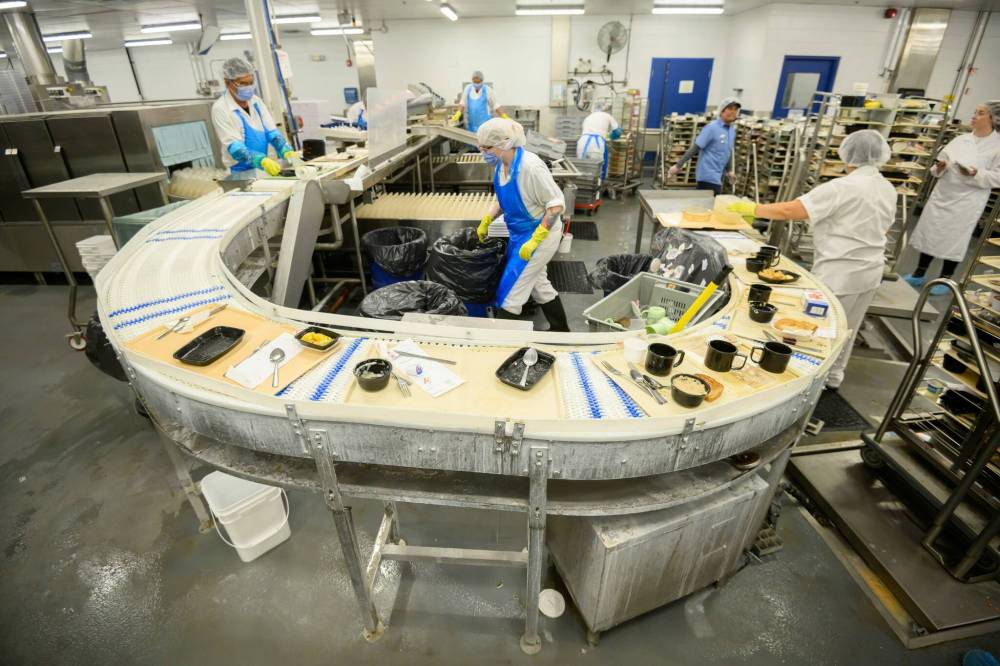
Mike Sudoma/Free Press
Staff at the WRHA food distribution centre work around conveyor belts, washing food containers, trays and cutlery.
Regional distribution facilities, known internally as RDFs, operate on a three-week menu cycle with multiple entrée options for each lunch and dinner service.
Master’s weekly prep list is a five-page spreadsheet with dozens of predictor variables.
The tour continues into the food storage area. Along the way, Hanslit points out the reheating unit, a box on wheels installed in the wellness center that acts as a portable refrigerator/oven to keep trays at the right temperature before serving.
Before a new meal is added to the mix, it is rigorously tested to make sure it can be recreated and reheated in bulk.
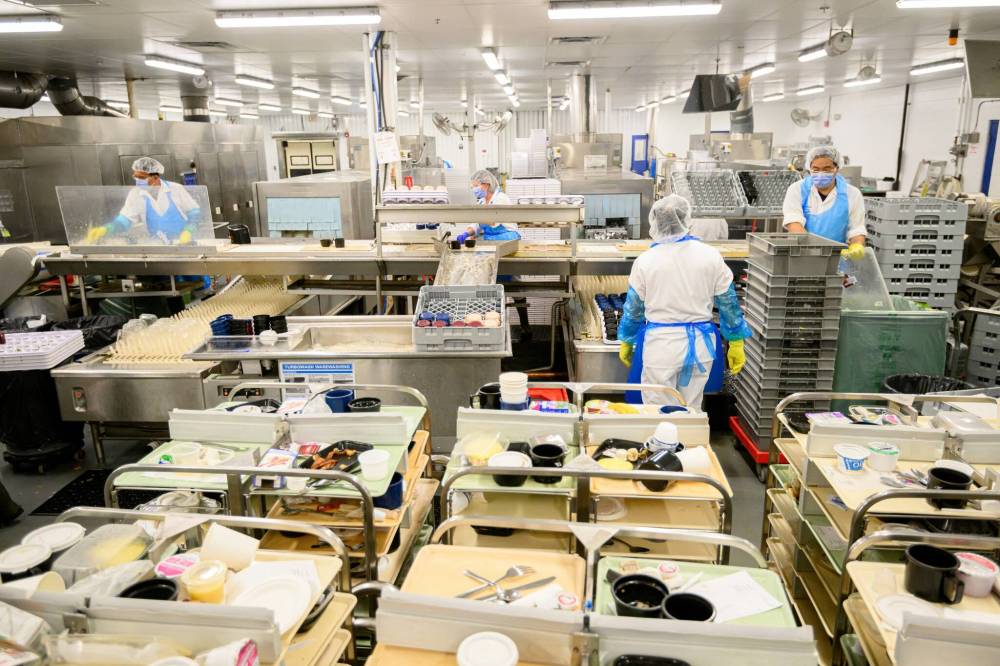
Mike Sudoma/Free Press
Workers clean the trays once they are delivered to the food distribution center and reuse them for the next day's meal orders.
“You're cooking all the ingredients together, so you need to make sure they work together,” Hanslit says of main dishes. “You might have a vegetable that's a little moist, but you don't want to pair it with a dish that needs to be battered and crispy. All of those factors are taken into consideration.”
In healthcare settings, nutrition is often more important than appearance, and Julie Gislason, a registered dietitian and regional manager of clinical systems, leads a team that ensures RDF foods are nutritionally balanced and delicious to eat.
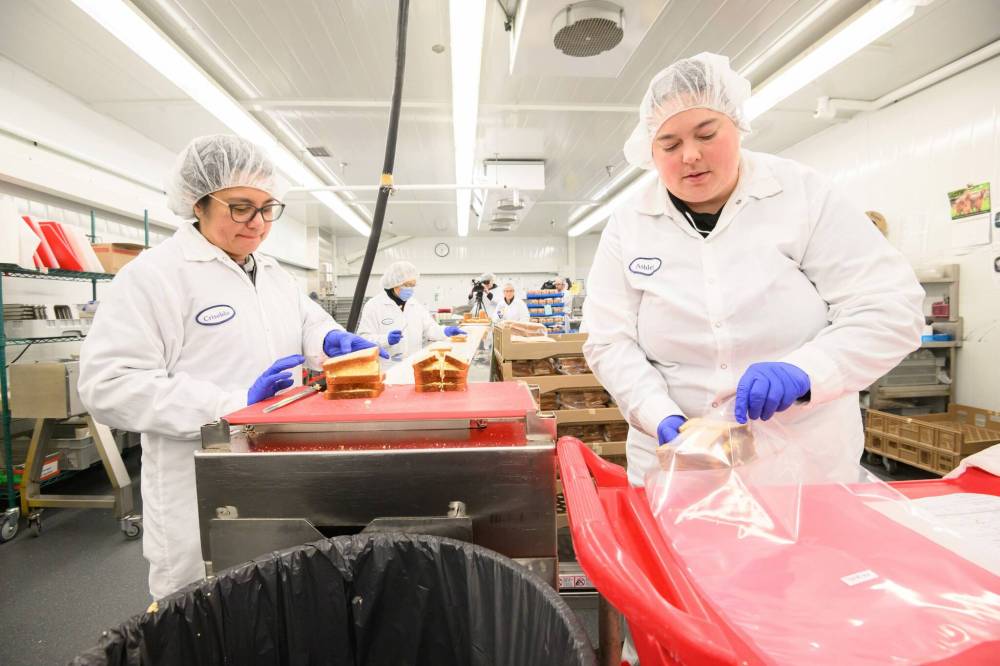
Mike Sudoma/Free Press
WRHA food and nutrition workers Criselda (left) and Ashley (right) assemble and package egg salad sandwiches before delivery to patients in Winnipeg.
“When you're unwell, most foods don't taste good. It's important to offer nutritious, attractive and tasty meals and to work with the medical team and the whole family to promote intake, because we really want to address malnutrition,” Gislason says.
Upon admission, patients are screened for malnutrition and triaged to an on-site dietitian if needed.
Returning to the tour, Hanslit stops at the walk-in freezer, a room filled with shelves stacked with frozen foods.
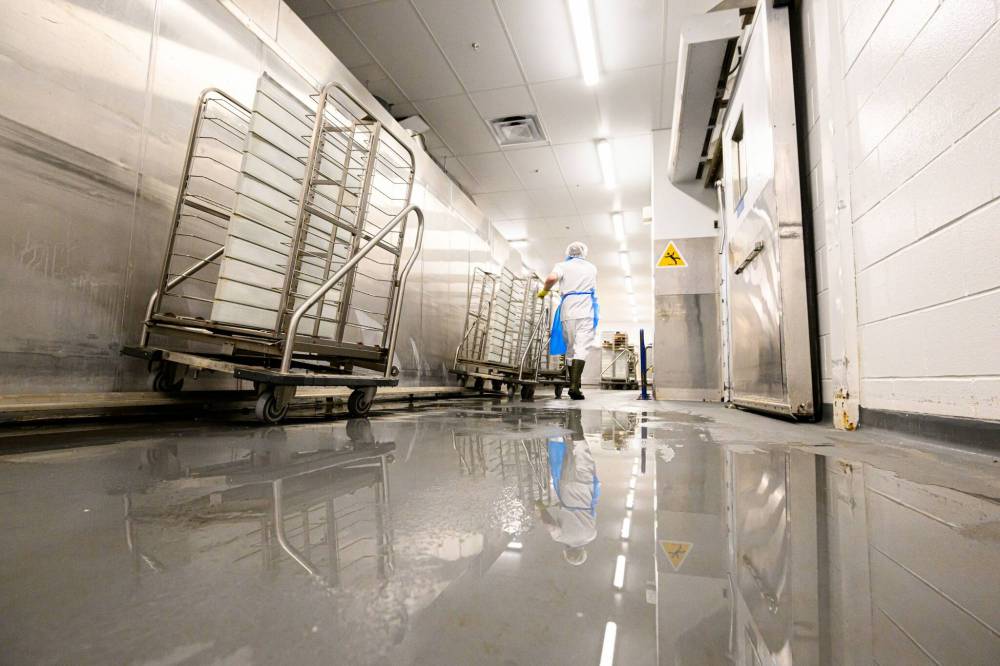
Mike Sudoma/Free Press
A worker carries a cart used to deliver prepared meals to patients at a food distribution centre in Winnipeg.
“One of the criticisms we get is that we serve frozen food, but the reality is that the food we serve here is exactly the same kind of food you would buy at home,” Hanslit said.
The WRHA has strived to source more products from local suppliers and has expanded its cultural food options: bannock, bison and samosas are currently on the menu, with rice expected to be added as a breakfast option in the near future.
Down the hall there's a room dedicated to thawing bags of pre-made meals, meats and mixed vegetables, though not all are frozen.
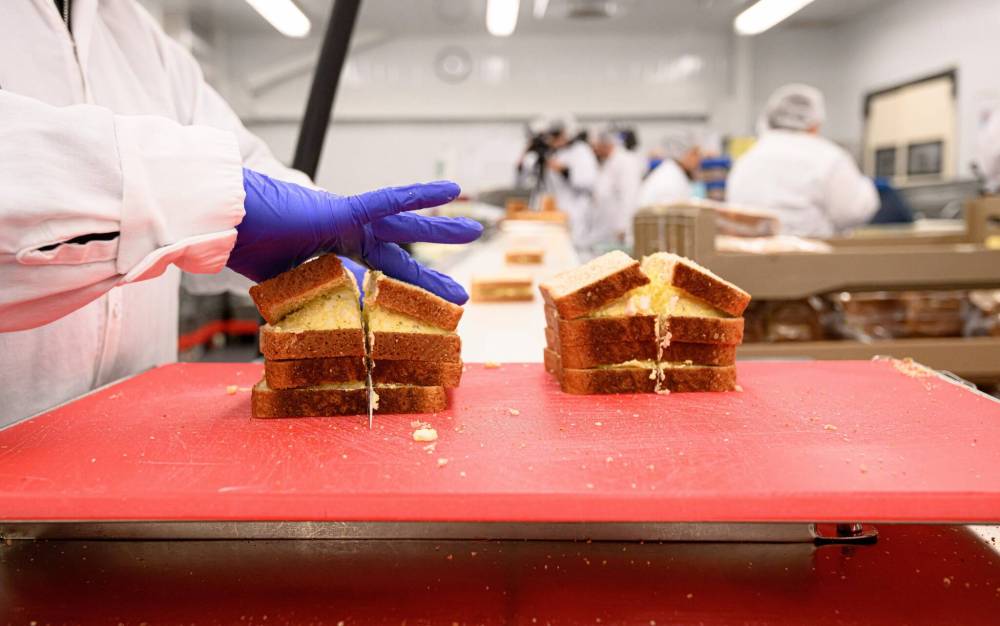
Mike Sudoma/Free Press
Criselda, a WRHA employee, slices egg salad sandwiches before packaging and shipping them.
In a nearby room, several of the facility's 250 staff members are busy slicing fresh apples and plating salads. In another room, assembly-line workers are assembling and bagging 544 egg salad sandwiches on white and whole-grain bread. Computerization and meticulous planning keep food waste to a minimum.
Noticeboards are plastered with notes of patient praise for the quality of the food, and the WRHA claims that, based on regular patient surveys, food satisfaction is around 86 percent.

Mike Sudoma/Free Press
Perogies are on the menu at WRHA health facilities.
These meal tickets are then sent to a tray line where the components of each order are assembled, verified, and then stacked and prepared for delivery.
The team can process eight trays per minute, and the workspace is complete with mechanical lifts, timed conveyor belts and ergonomic optimization to avoid injuries from repetitive use.
Delivery trucks pick up and return cartloads of food three times a day, and throughout our tour, dinner trays were being prepared and breakfast trays were being returned for washing.
The enormous crockery area is a sight to behold – the room is filled with trays of coffee cups, remnants of packaging, mini boxes of cereal, half-eaten waffles etc. RDF also carries out waste audits to see which meals are regularly left uneaten.
Sometimes the trays arrive with dentures, wallets or other personal items, which the ticket system makes it easy to return.
Staff wearing rubber gloves and aprons rinse and organize the incoming trays, then run the reusable cutlery and crockery through an industrial dishwasher and place them back on the production line.
The tour ends in a conference room, where tray carts are wheeled in and the assembled reporters are invited to sit down for lunch.
The locally grown potato and cheddar perogies are a “beloved” menu item, according to Hanslit, and are served three per order, with a generous portion of corn and surprisingly salty garlic sausage.
The fruit salad was good but the coleslaw had too much dressing and the minestrone soup was a bit watery.
While not a five-star dining experience, this platter is delicious, especially considering the sheer size of the kitchen in which it is served.
eva.wasney@winnipegfreepress.com
X: @evawasney

Eva Wasney
Arts reporter
Eva Wasny is a reporter for the Winnipeg Free Press.
Read more bio
Our newsroom depends on an increasing readership to power our journalism, so if you're not already a paying subscriber, please consider taking out a subscription.
Our newsroom relies on readers like you to power our journalism, and we appreciate your support.



